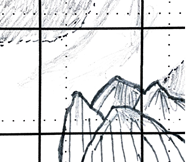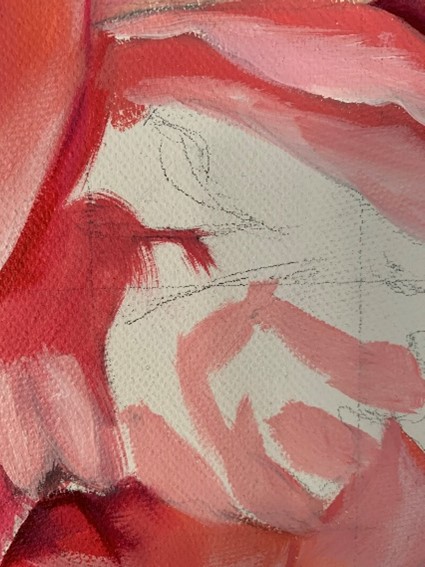Beautiful black swans were found gliding serenely in Australian waters a couple of centuries ago when it was considered impossible for them to exist. For some people, painting or drawing seems as hopeless as finding a black swan did in the 1800s. It is my deeply held conviction that everyone can do some form of Art. Some people won’t attempt to create Art because they believe they aren’t good at it. You do not have to be good – you have to be you.
Just as we are all individuals, we all have the right to express ourselves creatively. What comes out of that creative expression is not good or bad, and it cannot be wrong – you are the expert on you! Many people I speak to about art say that they cannot draw (even people that do Art for a living!), or that they are terrible at Art. This conviction is so deeply embedded that it is part of people’s identity, and they are very reluctant to let it go. If you are someone that automatically says, “I can’t draw”, or “I hate art”, I hope I can give you some inspiration and tips on overcoming those negative feelings and having a go at making something creative.
Do you remember being a little person and feeling the urge to make something? Do you remember the deep satisfaction you got from expressing yourself without words? You might have been given crayons/paints and encouraged to experiment on paper. You might have taken things into your own hands and had a brilliant time finger painting.
Kids do not start off having preconceptions about what Art is, and they are certainly not guided by what it should look like, or even when/where it should happen. It is interesting watching kids be unself-consciously creative. I have three boys, and they were never that keen to sit down and do a detailed drawing (no matter how many times I tried to get them to). I bought my boys paint, and they painted the exterior of the fabulous peddle car that they played with outside (“It’s camouflage, Mum!”). I will never forget my youngest pulling out the felt markers and decorating the walls of the kitchen the day before we were due to move out of our rental… Oh my God that was hard to clean off.
So, we have the urge to make our mark on the world creatively at a young age… Let’s see if we can tap into that by looking at a few different techniques to get us going.

Scribble Art
Find a piece of paper and some coloured pencils that appeal to you. Randomly guide one of the pencils in a pattern over the paper—Colour in the shapes that are created.
OR
You can do something like what I have done on your computer (the same principles, less mess). All I did was scribble around with a pen tool, then filled in the shapes with a magic paint pot (using Window’s Paint 3D).
If you squint a bit, can you imagine elements of a black swan in the picture above? Yes? No? Abstract Art is excellent for having a hidden meaning. No one else has to see what you see in it, and they don’t even have to like it.

Concrete Poetry
Haven’t heard of concrete poetry? Neither had I until today! It is using words/letters/poetry to create Art. Graphic patterns can be made with linguistic elements and add meaning to the artistic result. Concrete Poetry started as an art movement in the 1950s when concrete artists and poets came together to create a new style of work in Northern Europe and Latin America (Thomas 2020).
Above is an example of a famous concrete poem by John Hollander, called “Swan and Shadow” (Hollander 1966)
A simple way to have a try at your first concrete poem is to think of a noun (person/place/thing) and words that relate to it, then write it in the shape of that thing… It doesn’t have to be in poem form.
Grids
Find a picture that you like, mark it up with a grid and then recreate that picture on your chosen canvas/paper surface. Sound easy? Well, it is relatively straight forward, but there are a few things to take note of.
Tips for gridding pictures:
- Keep the picture simple to start
- Use a larger grid for less detailed pictures, smaller for more important detail
- Focus on one square at a time when you draw/paint your artwork
- Don’t worry about your creative piece looking exactly like the original. Sometimes it is the colours that inspire you, sometimes the line or the texture.
Here is an example for you:

Step 1 – The Picture

Step 2 – Draw a grid over the top
Step 3 – Grid up your paper/canvas with a lead pencil (so you can rub out the lines later if you want to before you start colouring it in). You can make this grid larger/smaller than the original picture.
Step 4 – Start sketching, one square at a time. Look at what appears in the original picture that you have gridded and try to recreate it.


Here is a picture that I am currently working on using this technique:


Do any of the above techniques (scribble art, concrete poetry or gridding) pique your interest? Perhaps there is another one that could get you going?
Whatever the motivation, open your wings and enjoy the process.

